How Pallet Inverters Solve Automation in Busy Meatpacking and Pharma Zones in Brazil?
Are your warehouse operations a source of constant headaches? You see bottlenecks everywhere. Workers manually handling heavy loads, products getting damaged, and valuable time being wasted. This chaos isn't just frustrating. It directly eats into your profits, creates safety hazards, and puts your delivery schedules at risk. You know there has to be a better way to manage load transfers, but complex, expensive automation systems seem overwhelming. What if a single, robust machine could solve these problems, streamlining your workflow almost overnight?
Pallet inverters solve automation challenges in busy Brazilian meatpacking and pharma zones by replacing slow, unsafe manual labor with a fast, mechanized process. They enable the seamless exchange of pallets—for example, from a standard wooden pallet to a hygienic plastic one—in under a minute. This single step is crucial for meeting strict sanitation standards, preventing product damage, reducing labor costs, and speeding up the entire logistics chain from receiving to the clean production area.
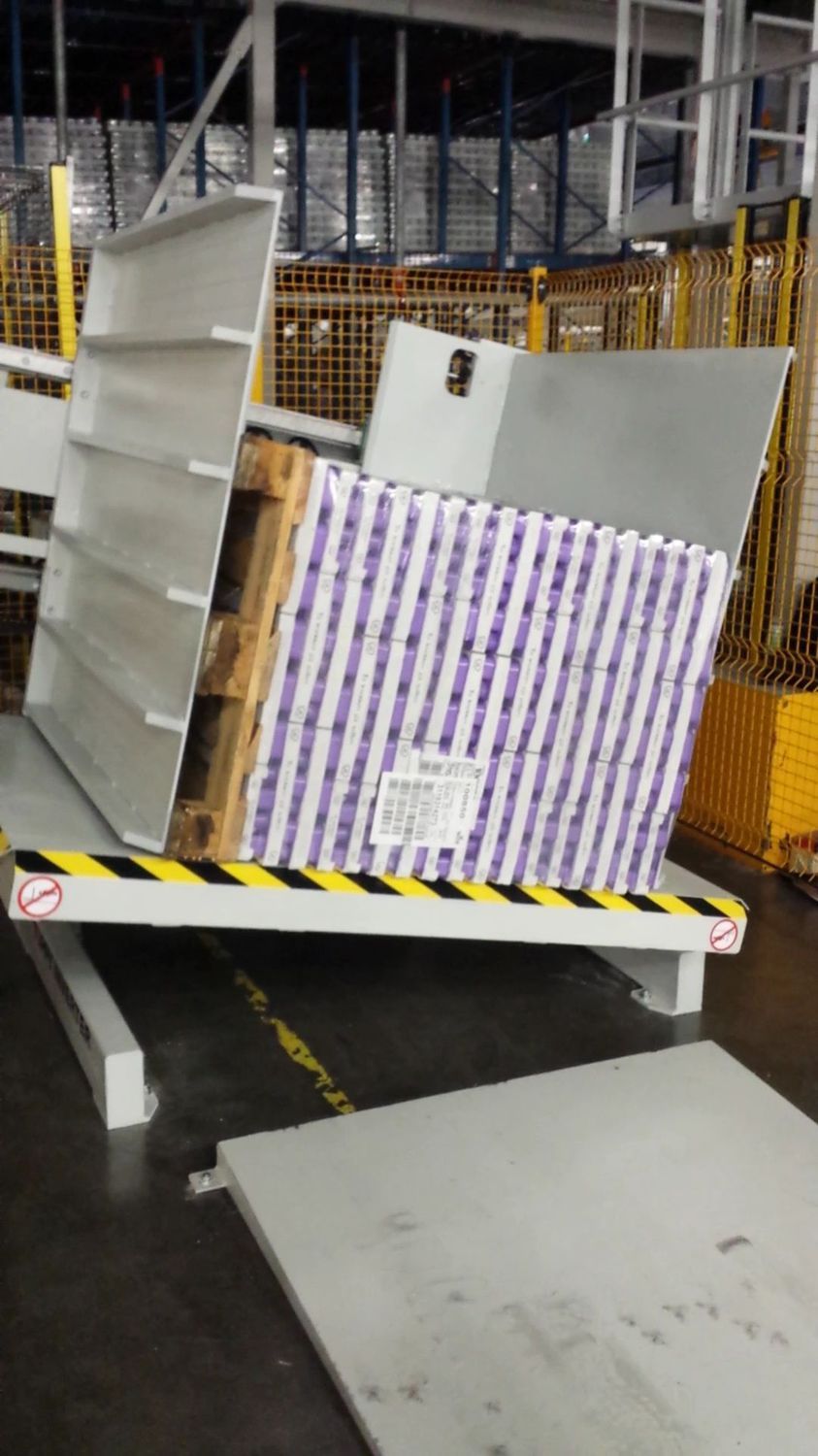
I’ve spent my entire career in the packaging and material handling industry. I started on the factory floor and eventually built my own company, SHJLPACK. I’ve seen firsthand how small inefficiencies can snowball into massive operational problems. A client of mine in the food industry was facing huge penalties because their wooden pallets couldn't enter the clean processing area. Their solution was to have four workers manually unstack and restack every single pallet. It was slow, expensive, and products were constantly being dropped. The solution was surprisingly simple. We installed a pallet inverter. It transformed their entire receiving process. This story isn't unique. While this article focuses on Brazil's demanding industries, the core principles of efficiency, safety, and smart investment apply everywhere, from food processing to heavy industries like steel manufacturing. Let's explore how.
What specific challenges in meatpacking and pharma make pallet inverters a necessity?
Imagine the entry point to your clean manufacturing zone. On one side, you have incoming goods on standard, often-unclean, wooden pallets. On the other side, you have a sterile environment where only sanitized plastic or metal pallets are allowed. The gap between these two worlds is a major point of risk. Any contamination that crosses this line can lead to catastrophic consequences. We're talking about product recalls, government fines, and irreversible damage to your brand's reputation. The pressure to get it right every single time is immense. This is the daily reality in Brazil's meatpacking and pharmaceutical industries, and it's a problem that manual labor simply can't solve reliably. A dedicated machine is not just a nice-to-have; it's a fundamental requirement for safe operation.
Pallet inverters are a necessity in meatpacking and pharma because they create a physical, controlled barrier against contamination. They allow companies to enforce strict pallet hygiene policies by quickly and safely transferring goods from external wooden pallets to in-house sanitized pallets. This process is critical for complying with ANVISA regulations in Brazil, maintaining the integrity of the cold chain for temperature-sensitive products, and eliminating the ergonomic risks and inefficiencies of manual handling.
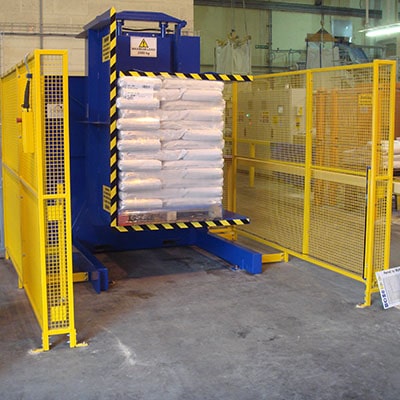
The Critical Role of Hygiene Control
In sectors like pharmaceuticals and meat processing, hygiene is not just a quality metric; it's a license to operate. Wooden pallets are a major vector for contaminants. They are porous, can splinter, and can harbor moisture, mold, and bacteria. Bringing a street pallet into a GMP (Good Manufacturing Practices) or cleanroom environment is simply not an option. A pallet inverter acts as a gatekeeper. It allows a full pallet load to be inverted 180 degrees, so the original pallet can be removed from the top. Then, a clean, sanitized plastic or aluminum pallet is placed on the load, and the machine inverts it back. The entire process happens in a contained area, ensuring that the dirty pallet never crosses the threshold into the clean zone. This isn't just about swapping pallets; it's about creating a verifiable, repeatable process that auditors and regulatory bodies can approve. It removes human error and provides a systematic solution to a critical compliance problem.
Maintaining the Cold Chain and Product Integrity
Many products in these industries, such as vaccines or fresh meat, are extremely temperature-sensitive. They exist in a cold chain that must not be broken. When workers have to manually unstack a cold pallet in a warmer ambient environment, the process is slow. The products on the top and sides of the pallet are exposed to temperature fluctuations for an extended period, which can compromise their quality and safety. A pallet inverter completes the entire transfer in about 60 seconds. This speed is crucial. It minimizes the time the product spends out of its ideal temperature range. Furthermore, the secure clamping mechanism of an inverter holds the entire stack firmly in place. This prevents boxes from shifting or being crushed, which is a common issue during manual restacking, especially with fragile items like glass vials or soft packaging.
Enhancing Worker Safety and Ergonomics
Let's be direct. Manually transferring a ton of product from one pallet to another is dangerous and inefficient work. It involves repetitive bending, lifting, and twisting—all classic causes of musculoskeletal injuries. A single back injury can lead to lost workdays, worker's compensation claims, and lower team morale. I've seen factories where this is a constant problem. A pallet inverter removes this physical strain entirely. A single operator, typically using a forklift, loads the pallet into the machine and pushes a button. The machine does all the heavy work. This not only makes the workplace safer but also allows you to reallocate your valuable labor to more skilled, value-adding tasks instead of pure manual grunt work.
| Feature | Manual Pallet Swapping | Automated Pallet Inverting |
|---|---|---|
| Cycle Time | 15-25 minutes | ~60 seconds |
| Labor Required | 2-4 Workers | 1 Operator (part-time) |
| Contamination Risk | High (human contact, pallet exposure) | Very Low (controlled process) |
| Product Damage Risk | Moderate to High (dropping, crushing) | Very Low (secure clamping) |
| Worker Injury Risk | High (repetitive strain, lifting) | Negligible |
| Process Consistency | Low (depends on workers) | High (machine-controlled) |
How does a pallet inverter directly improve operational efficiency and cut costs?
Think about the hidden costs in your warehouse. A worker accidentally punctures a bag at the bottom of a pallet with a forklift. Now, the entire stack has to be unloaded to replace that one bag. That's hours of labor lost. Or consider a production line waiting for raw materials because the receiving team is manually restacking pallets to meet hygiene rules. That's expensive downtime. These small, daily inefficiencies add up to significant financial losses over a year. You feel the pressure to reduce operational costs, but you can't compromise on quality or safety. The solution lies in targeting these specific, wasteful processes. A pallet inverter is a direct solution that generates a clear and rapid return on investment by tackling these issues head-on.
A pallet inverter directly improves operational efficiency by transforming a slow, labor-intensive task into a quick, one-person job. This drastically reduces labor costs. It also cuts costs by minimizing product damage that often occurs during manual handling and by speeding up the entire receiving and internal logistics process. This increased throughput means less equipment downtime and a more productive operation overall, leading to a payback period that is often less than 12 months.
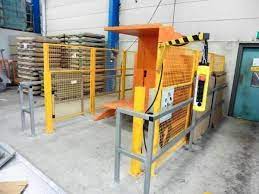
A Clear Calculation on Labor Savings
This is where the numbers speak for themselves. Let's do some simple math. Suppose you have two workers spending three hours each per day manually swapping pallets. That's six hours of labor per day. If your loaded labor cost is $20 per hour, you're spending $120 every day, which is over $30,000 a year, just on this one task. A pallet inverter, operated by a forklift driver who is already on duty, can do the same work in a fraction of the time. The labor dedicated specifically to pallet swapping drops to near zero. I remember working with a CEO of a steel-strapping company. He was skeptical at first. He saw the machine as a cost. I asked him to track the time his team spent just dealing with damaged pallets from suppliers. The number shocked him. He realized the pallet inverter wasn't a cost; it was an investment that paid for itself by eliminating that wasted time. This same logic applies universally, whether you're handling steel coils or boxes of medicine.
Slashing Rates of Product Damage
When you manually unstack and restack a pallet, every box that is touched is at risk of being dropped, crushed, or mishandled. The products at the very bottom of the pallet are especially vulnerable. Often, a single damaged container can leak and spoil the boxes around it, compounding the loss. A pallet inverter clamps the entire load securely before rotating it. The pressure is evenly distributed, and the products never move relative to each other. There is no manual contact. This simple mechanical action virtually eliminates transfer-related damage. For companies handling high-value goods, preventing the damage of even a few products a week can translate into thousands of dollars saved annually. It also allows for easy quality control. If you discover a damaged case at the bottom of a pallet, you can invert the load, replace the single case in seconds, and put the pallet back into circulation.
Boosting Overall Throughput
Warehouse efficiency is all about flow. Anything that stops or slows down the movement of goods is a bottleneck. Manual pallet handling is a classic bottleneck. It creates a traffic jam right at the receiving dock or at the entrance to production. By reducing a 20-minute task to a 60-second one, a pallet inverter breaks this bottleneck wide open. Forklift drivers aren't waiting around for manual teams to finish. Production lines aren't starved for materials. The entire facility becomes more fluid and responsive. This increase in throughput can have a huge impact on your plant's overall capacity utilization. When you can move goods faster, you can process more goods in the same amount of time with the same number of people.
| Cost Center | Manual Pallet Swapping (Annual Cost) | With Pallet Inverter (Annual Cost) | Annual Savings |
|---|---|---|---|
| Labor | $31,200 (2 workers, 3 hrs/day, $20/hr) | $0 (absorbed into forklift driver duty) | $31,200 |
| Product Damage | $15,000 (Estimated 1% of product value) | $1,500 (Reduced by 90%) | $13,500 |
| Downtime | $25,000 (Line waiting for materials) | $2,500 (Reduced by 90%) | $22,500 |
| Total Annual Savings | - | - | $67,200 |
| Estimated Payback Period | - | - | < 10 Months |
Note: Figures are illustrative and depend on specific operational conditions.
Are all pallet inverters the same, and what should you look for when choosing one?
So, you are starting to see the value. You recognize that a machine can solve your pallet transfer problem. You do a quick search online and are immediately flooded with options. You see machines that tilt, machines that spin 180 degrees, and machines that push the load from one pallet to another. They come in different sizes, colors, and price points. It's easy to feel overwhelmed. Making the wrong choice is a real risk. A machine that is too small for your loads, too slow for your pace, or too complex for your team to operate will just end up being another problem, not a solution. It might sit in a corner collecting dust, a monument to a failed investment. To avoid this, you need to look past the marketing and understand the fundamental differences to find the right partner for your needs.
No, not all pallet inverters are the same. They differ significantly in their mechanism, load capacity, speed, and suitability for different types of products. The main types include 180-degree free-standing inverters, in-line pallet changers, and single-clamp machines. When choosing one, you must carefully evaluate your specific needs: the weight and dimensions of your heaviest load, the type of product (e.g., boxes, bags, pails, or vials), your required cycle time, and the level of automation you want to integrate into your existing workflow.
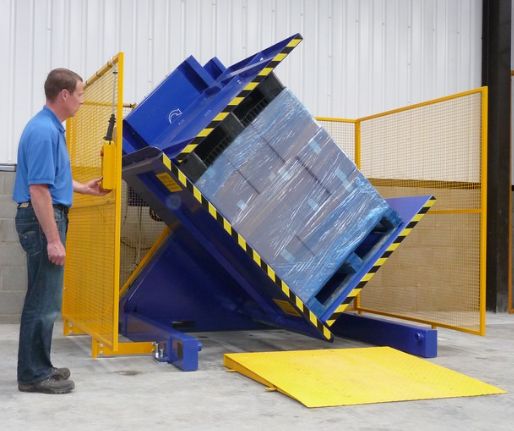
Understanding the Core Machine Types
Let’s simplify the options. Most machines fall into a few basic categories. The most common is the 180-Degree Free-Standing Inverter. This is the workhorse you see in many warehouses. A forklift places the pallet into the machine, it clamps the load, rotates it a full 180 degrees, and the operator can then remove the original pallet from the top. It's simple, robust, and versatile. Then there are Pallet Changers or Exchangers. These machines don't always invert the load. Some gently tilt the load and allow the pallet to be swapped out, while others use a pusher mechanism to slide the entire product stack from one pallet to another at floor level. These are often better for very unstable or sensitive loads. Finally, you have highly Automated In-line Systems. These are integrated directly into a conveyor line and operate with zero human intervention. The choice depends entirely on your application. For general-purpose pallet swapping, the 180-degree inverter is often the most cost-effective and flexible solution.
Key Specifications That Matter Most
When I talk to clients, I tell them to ignore the color of the machine and focus on three things: capacity, controls, and construction. First, Capacity. You must know the weight and dimensions (Length x Width x Height) of your heaviest and largest pallet load. Always choose a machine with a capacity at least 20% higher than your maximum load to ensure longevity and safety. Second, Controls. How is the clamping pressure adjusted? For delicate products like pharmaceuticals in glass vials, you need gentle, adjustable pressure. For robust goods like bags of cement or steel parts, you need high, secure pressure. A good machine will have easily adjustable pressure controls. Third, Construction. Look at the build quality. Is it made from heavy-gauge steel? Are the welds clean and strong? A pallet inverter is a heavy piece of equipment that endures significant forces every cycle. A flimsy machine will not last. This is especially true in demanding industrial environments like a steel mill or a 24/7 distribution center.
Choosing a Partner, Not a Vendor
This is perhaps the most important point. You are not just buying a piece of steel. You are investing in a solution to a problem. A cheap machine from a vendor who disappears after the sale is a massive liability. You need a partner. A partner will ask you the right questions about your loads and your process. A partner will help you choose the right model, not just the most expensive one. They will provide support for installation, training for your operators, and be there for you when you need spare parts or maintenance advice down the line. I built my company, SHJLPACK, on this principle. We are engineers first. We want to understand your challenge and provide a total solution, because your success is our success. A good supplier knows their machines; a great partner knows your business.
| Machine Type | Mechanism | Ideal Load Type | Pros | Cons |
|---|---|---|---|---|
| 180° Inverter (FS Model) | Clamps and rotates 180° | Boxed goods, bags, pails, durable items | Versatile, fast, cost-effective | May not suit very unstable loads |
| Pallet Exchanger (Pusher) | Slides load from one pallet to another | Stable, uniform loads (e.g., cases of drinks) | No inversion, good for height-restricted areas | Less effective for irregular or bagged goods |
| Pallet Changer (Tilter) | Tilts load ~115° to slide pallet out | More sensitive or semi-stable loads | Gentle handling, good for pails/tubs | Slower cycle time than an inverter |
| Automated In-Line System | Conveyor-fed, fully automatic | High-volume, standardized loads | Zero labor, integrates with WMS/MES | Higher initial investment, less flexible |
My Insight: Why is automation with pallet inverters more than just an operational upgrade?
Over the years, I've seen many factory owners view machines like pallet inverters as simple tools. They see a problem—slow pallet swapping—and buy a tool to fix it. This is a limited view. If you only see it as a way to swap pallets faster, you miss the much larger, strategic value it brings to your entire operation. Thinking this way is like buying a powerful computer just to use it as a calculator. The real potential is unlocked when you see this type of focused automation not as an isolated fix, but as a critical building block for a more modern, resilient, and intelligent factory. It’s a first step on the path to bigger goals, like the digital transformation and cost reduction that forward-thinking leaders like Javier Morales are pursuing.
Automating with a pallet inverter is more than an operational upgrade; it's a strategic move. It improves the accuracy of your inventory data for MES and WMS systems by creating a controlled entry point. It fundamentally improves worker safety and morale, showing a commitment to a better work environment. And it builds a more resilient and efficient supply chain, making your business stronger and more competitive in a volatile market. It's a foundational piece of the modern, data-driven factory.
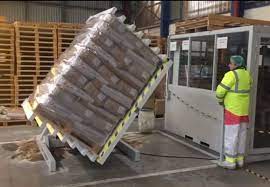
A Gateway to Your Digital Transformation
Every modern factory aims to be data-driven. You want to implement systems like a Manufacturing Execution System (MES) or a Warehouse Management System (WMS) to have full visibility of your operations. But these systems are only as good as the data they receive. A pallet inverter creates a perfect data collection point. As a pallet is inverted, its contents can be scanned and its status updated automatically—for example, from "Received" to "Ready for Production." This ensures that the data entering your clean zone is 100% accurate. You are not just swapping a pallet; you are creating a digital checkpoint. This simple piece of automation becomes an enabler for much larger goals, like achieving the 95% equipment uptime and full production visibility that so many plant managers dream of. It provides a clean, reliable data stream that is the foundation of any Industry 4.0 initiative.
A Powerful Statement on Worker Safety and Value
As a leader, you are responsible for the well-being of your people. Continuously asking them to perform strenuous, repetitive, and unsafe tasks sends a message that their health is secondary to output. This leads to high turnover, low morale, and a poor safety record. Investing in automation like a pallet inverter sends the opposite message. It says: "We value your safety, and we want to use your skills for more important work." When I see a company invest in this technology, I see a leader who understands that people are their most valuable asset. The result is a more engaged, more loyal, and more productive workforce. This isn't a soft benefit; it has a direct impact on your bottom line by reducing injuries, absenteeism, and the costs of constantly hiring and training new people.
Building a More Resilient and Agile Operation
The market is unpredictable. Demand fluctuates. Supply chains can be disrupted. A resilient business is one that can adapt quickly to these changes. Manual processes are rigid and slow. If you suddenly need to increase throughput to meet a spike in demand, a manual pallet-swapping process will break. You can't just hire and train four new people overnight. An automated system, however, is scalable. The pallet inverter can handle the increased volume with the same single operator. It makes your receiving process more elastic and less fragile. This resilience is a key competitive advantage. It allows you to say "yes" to new opportunities while your competitors, who are still stuck with inefficient manual processes, have to say "no." It turns a former bottleneck into a source of strength.
| Operational "Fix" | Strategic "Gain" |
|---|---|
| Swapping a wooden pallet for a plastic one. | Creating a verified, auditable hygiene control point. |
| Reducing the time to transfer a load. | Increasing overall plant throughput and capacity utilization. |
| Stopping workers from lifting heavy boxes. | Improving employee safety, morale, and retention. |
| Replacing a damaged box at the bottom. | Minimizing product waste and improving profit margins. |
| Automating a single warehouse task. | Providing accurate data for MES/WMS and enabling digitalization. |
Conclusion
Pallet inverters are a simple solution for complex logistics. They boost efficiency, ensure safety, and provide a surprisingly fast return on your investment.




